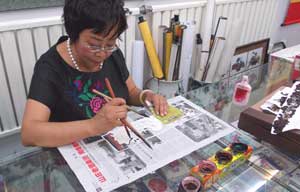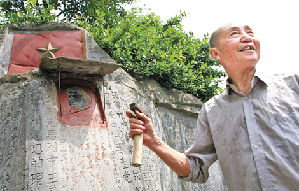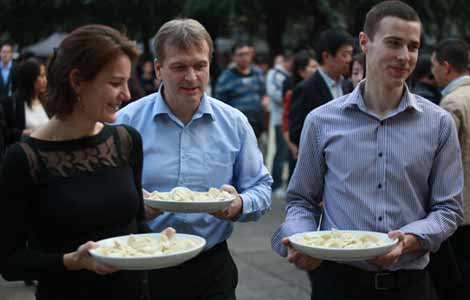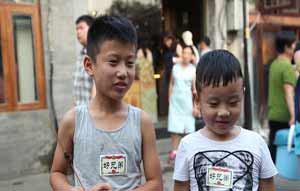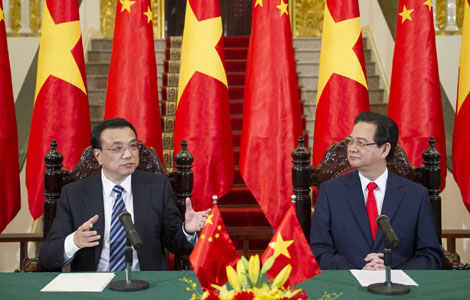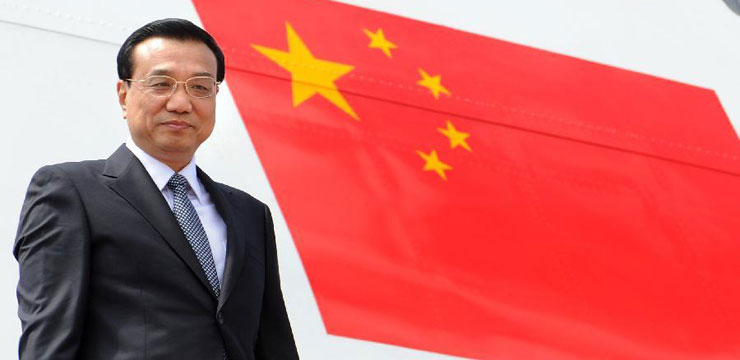Walk the talk
Updated: 2013-08-08 10:36
By Sun Yuanqing (China Daily)
|
||||||||
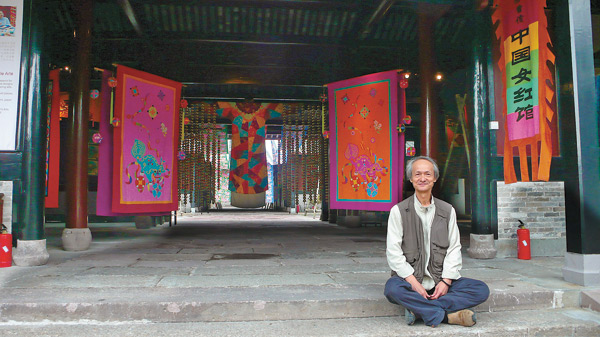 |
|
Huang Yung-sung curates several handicraft art exhibitions which are held at Cicheng's ancient compounds. Provided to China Daily |
Huang first came to the Chinese mainland in 1988, as soon as the Taiwan authorities allowed visits to the mainland. Having heard all the stories immigrants from the mainland had told him over the years, Huang was eager to experience the place himself.
"Everywhere I went, it felt as if I'd visited the place before because I have memorized the details since I was a child."
Huang traveled extensively all over West China, researching and recording as many Chinese folk crafts and arts as he could.
Five years ago, clothing manufacturers in Ningbo approached Huang after reading his book on Chinese needlework.
"They were attracted by the beautiful work. But they didn't know how to weave it into modern design," Huang says.
While helping the manufacturers in Ningbo, Huang got to know about the small town of Cicheng and was invited to design and oversee the handcrafts revitalization programs in the city.
"We have been manufacturing for the West for so long, at the expense of neglecting our own culture. There is no way to get out of it except to start preserving our native culture and weave it into the modern industry."
Huang recalls that in the early 1980s, when he was collaborating with Bertelsmann to publish the German version of his book Chinese Knot, his German counterpart noticed that Lycra cameras and Benz cars were very popular in China.
"He told me something I'll never forget, 'Germany has a good manufacturing industry because we attach great importance to handicrafts. Chinese knot is extraordinary and I believe there are many more'.
"He said that for a country, there will be no heavy industry without a light industry, and there will be no light industry if there is no traditional handicrafts," Huang says. "I was shockingly enlightened but also very sad."
As China sees rapid rural modernization in the past few decades, traditional handicrafts are being neglected at a pace faster than ever before, Huang says.
But, he says there is no need to be pessimistic.
"Think about the pattern of tai chi. It consists of two alternating forces, the yin and the yang. When the yin sinks, the yang climbs up, and together they are forever rolling forward. So when one force is sinking, don't panic, because it is also a sign of advancement of the whole mankind. The only thing we have to do is to preserve the good as much as possible."
| Setting Mao in stone |
For more China Face, here

 Victoria Beckham S/S 2014 presented during NYFW
Victoria Beckham S/S 2014 presented during NYFW
 'Despicable' minions upset Depp's 'Lone Ranger' at box office
'Despicable' minions upset Depp's 'Lone Ranger' at box office
 'Taken 2' grabs movie box office crown
'Taken 2' grabs movie box office crown
 Rihanna's 'Diamonds' tops UK pop chart
Rihanna's 'Diamonds' tops UK pop chart
 Fans get look at vintage Rolling Stones
Fans get look at vintage Rolling Stones
 Celebrities attend Power of Women event
Celebrities attend Power of Women event
 Ang Lee breaks 'every rule' to make unlikely new Life of Pi film
Ang Lee breaks 'every rule' to make unlikely new Life of Pi film
 Rihanna almost thrown out of nightclub
Rihanna almost thrown out of nightclub
Most Viewed
Editor's Picks
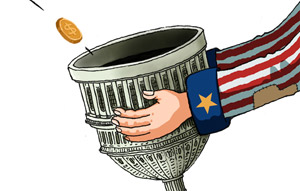
|

|

|

|

|

|
Today's Top News
Going green can make good money sense
Senate leader 'confident' fiscal crisis can be averted
China's Sept CPI rose 3.1%
No new findings over Arafat's death: official
Detained US citizen dies in Egypt
Investment week kicks off in Dallas
Chinese firm joins UK airport enterprise
Trending news across China
US Weekly

|

|
